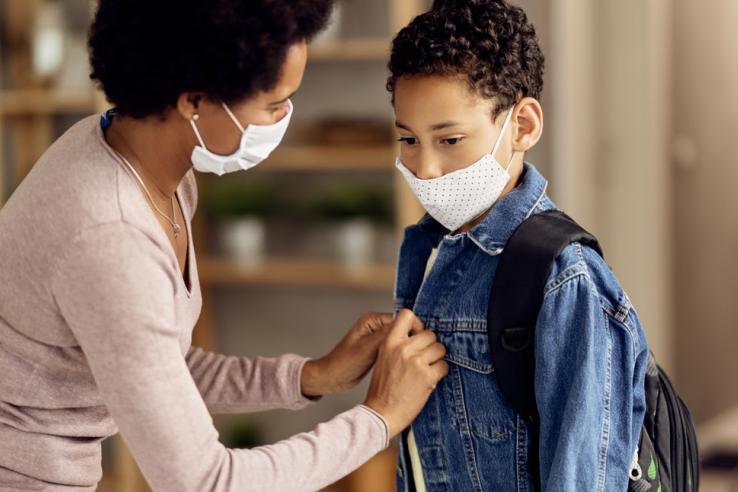August 2020 North America Newsletter

Good afternoon,
Last week, my kids went back to school. As for most families, things looked different this year. There were no back to school pictures or lists of classroom supplies to buy. Most strikingly, there wasn’t even a ceremonial drop-off. Like many kids this fall, mine will be resuming virtual learning from home.
Whether returning to reopened school buildings or continuing remote learning, “Back to School” this year will feel very different for parents, teachers, and students. But while families, educators, and policymakers adapt, it is paramount that addressing learning loss stays at the forefront of the conversation. As online learning continues, policy and education officials must be proactive to combat the growth of pre-existing inequities and gaps in educational access and achievement.
Existing research can provide decision-makers with useful guidance on how to navigate this transition. J-PAL’s Education Technology Evidence Review summarizes over 120 studies on education technology programs, and identifies which types and uses of technology have the most potential to improve student learning. However, as education leaders face unprecedented questions, new evidence is needed. This is why J-PAL North America launched the COVID-19 Recovery and Resilience Initiative. A new blog series is outlining the initiative’s goals and research agenda across three key policy areas, with the most recent installment detailing the initiative’s approach to work and research in education.
Lastly, I’d like to share an interview with J-PAL affiliated researcher Sarah Cohodes. Her research focuses on ensuring that all students can access quality education. In the interview, she discusses remote learning, school reopenings, and how these realities are impacting students and families. We hope that you’ll find her insights helpful as we think about the path forward and the work that must be done so that next year’s “Back to School” looks different from today’s.
Stay well,
Mary Ann Bates
Executive Director, J-PAL North America
Building an Effective COVID-19 Response: Addressing the Education Crisis
The COVID-19 pandemic has entirely shifted the education landscape in the United States. While education leaders should turn to existing evidence where possible, new evidence will be necessary as the field faces unprecedented challenges. J-PAL North America’s COVID-19 Recovery and Resilience Initiative aims to create a playbook of evidence-based policies to help communities effectively respond to COVID-19. To guide the initiative’s work in education, a new blog outlines how COVID-19 has exacerbated inequities in the American education system and where research should go from here to help us effectively address this enormous learning crisis. Research questions were developed in collaboration with J-PAL’s academic leadership, including top education researchers from across the country. Prioritized areas for future research include identifying strategies to minimize the widening of pre-existing achievement gaps, methods to address student trauma, and innovations to help parents support their children.
What Does the Evidence Say About Education Technology
As students return to school amid the COVID-19 pandemic, education technology will play a key role in how schools provide instruction. Education technologies can be a powerful tool to boost students’ learning outcomes. Our evidence review––Will Technology Transform Education For The Better?––summarizes over 126 rigorous evaluations of different types and uses of education technology. The review offers helpful insights to inform educators’ decision-making as they continue to incorporate technology to support remote or blended learning necessitated by COVID-19. While access to technology alone generally does not improve learning outcomes, students often need basic technology in order to utilize effective online resources. Evidence points to Computer-Assisted Learning (CAL) programs as highly effective education technology tools, particularly for math. CAL programs target instruction to meet students’ learning levels and help students develop skills at their own rate of progress. The review also notes that low-cost, tech-enabled nudges for student tasks or parental engagement activities show promise as well. For all education technologies, however, effective program design and widespread access to the tools necessary for use will be key to ensuring that these technologies work to alleviate, rather than aggravate, existing educational disparities.
An Education Researcher’s Perspective on Schools and the COVID-19 Pandemic
Sarah Cohodes is a J-PAL affiliated researcher with a focus on maximizing access to quality education. In a recent conversation between Professor Cohodes and J-PAL staff, she stressed that the best thing to support student learning will be to safely get them back into normal school as soon as possible. In order for this to be possible, she notes, a massive virus suppression effort will be necessary. Until then, open schools will put teachers, students, and their families at risk of COVID-19. At the same time, continued remote learning will continue to exacerbate learning disparities and place undue burdens on parents, particularly mothers. In the interview, Dr. Cohodes also touches on the roles schools play in society, how education leaders should be thinking about allocating resources, and how being a mother has influenced her research and perspective on the COVID-19 crisis. Additionally, she touches on the actions that schools and teachers will need to take to provide additional supports to the students who need them most, including those who were already falling behind before COVID-19 closures.